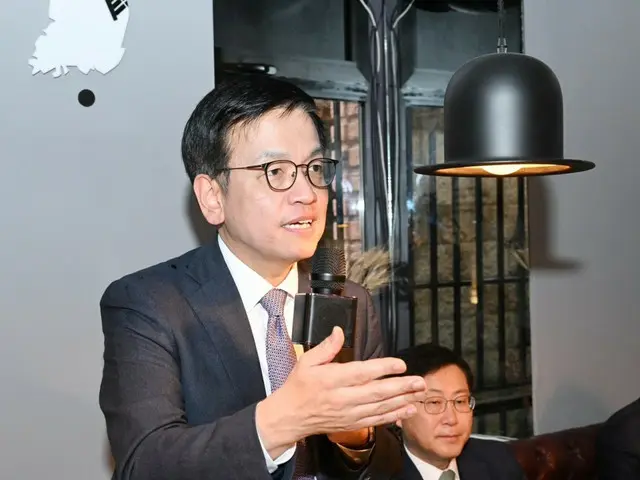This means that the government will increase the national income by more than $5,000 within the three years of its term. The South Korean government has revised its growth rate forecast for this year upwards, and the level is in line with the forecasts of international organizations.
The Organization for Economic Cooperation and Development (OECD) recently revised its economic growth forecast for South Korea this year upward from 2.2% to 2.6%.
On the 4th (local time), Choi held a press conference with a group of reporters from the Bank of Korea in Tbilisi, the capital of Georgia, and said, "GDP per capita is growing at a high rate.
"There are aspects where we need to support it to a certain extent, but the exchange rate is also important, and it will fluctuate depending on the exchange rate," he said, but added firmly, "I believe that the current administration can achieve $40,000."
He added, "Rather than the per capita GDP figure itself, what's important is that the people can feel and empathize that they are approaching the developed country level of $40,000."
Earlier, international rating agency Standard & Poor's (S&P) estimated South Korea's per capita GDP this year to be $35,000.
Given that the Yoon administration's term runs until 2027, it will need to increase per capita GDP by an additional $5,000 within the next three years or so.
Meanwhile, the Korean economy is showing high growth rates in the first quarter, raising expectations. In response to this result, the Ministry of Strategy and Finance said:
The government is currently revising its growth forecast for this year upwards. "The OECD recently predicted Korea's growth rate, and our forecast is not significantly different from that," Choi said.
The OECD has revised up its forecast for South Korea's economic growth rate this year from 2.2% to 2.6%. This comes after real GDP growth in the first quarter was 1.3%, better than expected.
The OECD also raised its growth forecast for 2021 from 2.1% to 2.2%. In particular, the OECD expects the Korean economy to overcome temporary stagnation and strengthen growth, supported by robust demand for semiconductors.
Consumption and investment will be affected by high interest rates and high prices in the short term, but they are expected to recover within the year.
"There are some things we need to consider, but more than that, it is important to boost domestic demand and the perceived economic situation as much as possible and improve the quality of life," he said, emphasizing that "we are not judging everything optimistically."
He said he aims to raise prices to the lower to mid 2% range in the second half of the year, and that he intends to keep public utility rates stable for the time being.
Choi said, "We are doing our best to at least prevent prices from rising too much, and we are working to keep prices in the low to mid 2 percent range in the second half of the year. For the time being, public utility fees will remain at 2 percent.
"We are trying to maintain stability," he said.
2024/05/07 07:04 KST
Copyrights(C) Herald wowkorea.jp 104

